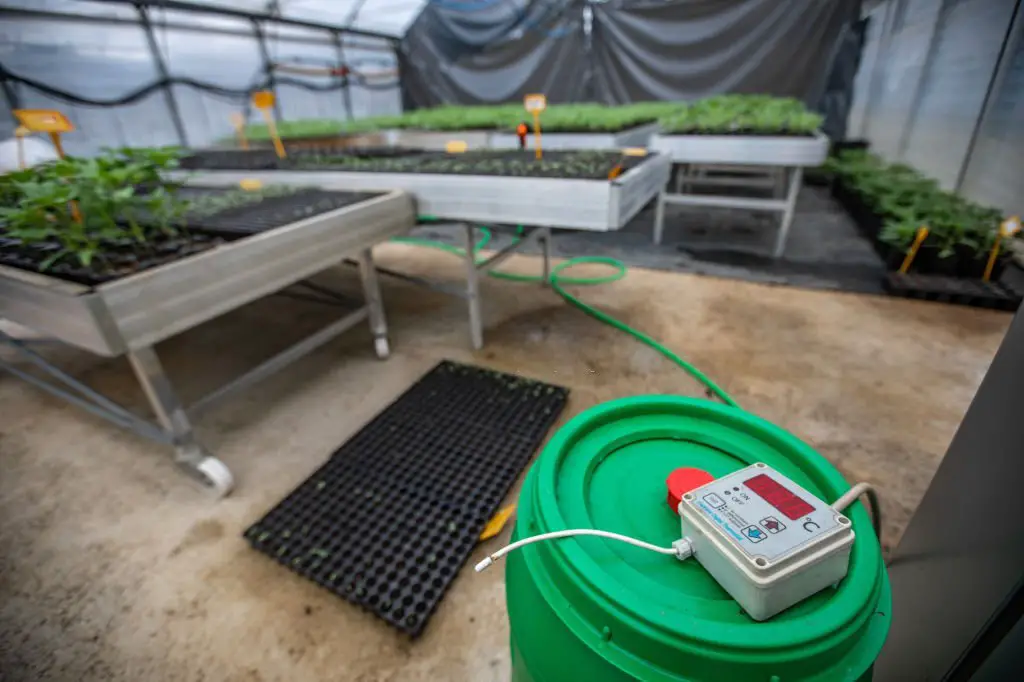Last Updated on April 5, 2024 by Real Men Sow
Controlling the temperature of seedlings is very important. Warmth is essential for young plants and seeds. Even though a greenhouse can feel warm and cozy during the day, it can be cold at night which can lead to the death of germinating seeds. Some species of plants thrive in cooler temperatures, while others thrive when it gets warmer. Before you decide how much heat to add to your greenhouse to start seeds, there are many factors to consider.
Knowing The Right Temperature for Seedlings
Some plant species’ seeds require temperatures as low as 50°F to germinate. However, seedlings thrive at 65-75°F. Although most seeds will germinate at temperatures that are higher or lower than the optimal germination temperature, they can also sprout at lower temperatures. However, extremes in one direction or another will greatly reduce germination rates. Most greenhouses can reach ideal temperatures even in winter. This eliminates the need to heat during daylight hours.
Plan Now for a “Blanket”
In a greenhouse, a sunny winter day can feel sparingly tropical, but at night, the warmth quickly evaporates, leaving young plants and seeds exposed. Even a well-heated, high-quality greenhouse can only keep the temperature around it at a mere 1-2 degrees Celsius in the winter.
To keep seedlings and germinating seeds warm in winter, even in a greenhouse, they need a blanket. This blanket can be in the form of a supplemental heat source. Many types of perennial and vegetable seedlings require temperatures at least 50 degrees Fahrenheit after seed germination to develop properly.
Raise the Temperature for Your Seedlings
Depending on the size of your greenhouse and how much you want to invest in supplemental heating. You can either plug in a heat mat or install a forced-air distribution system. Although heat mats are flexible and relatively affordable, they are best for small-scale growers.
While greenhouse hobbyists often use propane heat to heat the greenhouse interior, larger growers might invest in a system that distributes hot air evenly across the greenhouse. Another economical and small-scale way to increase the temperature of seedlings in a cold greenhouse is using electric space heaters.
Make Sure to Ventilate Your Seedlings
While some heating is necessary for cold months during daylight hours, the interior temperature of greenhouses rises rapidly with the rising sun. Overly warm environments can cause seedlings to grow too quickly and become weak and spindly, which leads to poor-quality plants that are difficult to transplant.
Every grower must provide an escape route for hot air to escape their greenhouse in order to reduce the greenhouse’s internal temperature by 10 to 15% above the night-time temperature. The most common method to remove excess heat is to use a louvered or moveable panel on the greenhouse’s roof. However, a cracked door or oscillating fan may also be used to reduce the temperature to a manageable level.


